FEPCOS-J (4) Easy programming of a multithreaded TCP/IP server in Java
- March 21, 2024
- 7850 Unique Views
- 9 min read
- Programming the system declaration of a multithreaded server
- Programming activity specifications of services that a multithreaded server provides
FEPCOS-J prototypically implements a Java language extension that allows the realization of a multithreaded TCP/IP server in Java without thread or network programming.
Please help me to make FEPCOS-J a Free/Libre and Open-Source Software (FLOSS).
Introduction
FEPCOS-J [1] is a Java development tool that prototypes a Java language extension for declarative programming of networked systems. See my previous posts for details [2, 3, 4].
Firstly, this post briefly defines the term "multithreaded TCP/IP server". It then describes how FEPCOS-J supports programming a multithreaded TCP/IP server in Java. Further, the post explains what implementing the server with FEPCOS-J looks like and provides an example. Finally, the post draws a conclusion.
I would also like to ask you to help me make FEPCOS-J a Free/Libre and Open-Source Software (FLOSS).
What is a multithreaded TCP/IP server?
The following section defines the term "multithreaded TCP/IP server" bottom up:
A server is a program that provides a service.
A client is a program that can use the services of a server.
A communication protocol is an agreement between the client and the server. In particular, the communication protocol specifies:
- a request with which a client asks a server for its service;
- a response with which a server answers a client's request.
Further, a multithreaded server is a server that uses multiple threads to be able to concurrently handle multiple clients' requests.
Finally, a multithreaded TCP/IP server is a multithreaded server that communicates with its clients using the TCP/IP protocol [5].
Using application-specific requests and responses, multithreaded TCP/IP servers are implemented, e.g., as HTTP/2, FTP, or SMTP servers [6, 7, 8].
Fig. 1 depicts an abstract example realization.
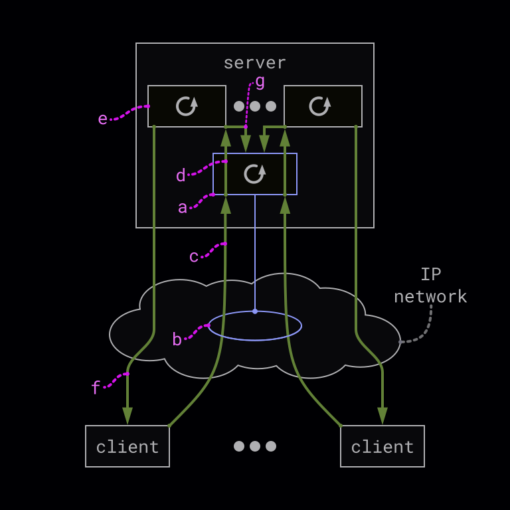
How does FEPCOS-J support developers programming a multithreaded TCP/IP server in Java?
If you enter "multi-threaded TCP/IP server in Java" into a search engine, you will get several results. Many of them explain manual Java programming and provide a lot of source code.
Compared to manually programming multithreaded servers in Java, FEPCOS-J significantly reduces the amount of source code required. In short, FEPCOS-J relieves Java developers of manual thread or network programming.
To explain, the programming of multithreaded TCP/IP servers in Java covers both a generic and an application-specific part.
The generic part is the programming of the main-class and multithreading TCP/IP aspects, like:
- the
main()– method with the main thread; - determining of an IP-address, and port [9];
- creating a ServerSocket [10] which is bound to the IP-address and the port;
- a
while-loop which blockingly calls ServerSocket.accept() to await client requests; - starting a Thread [11] or Virtual Thread [12, 13] to handle the request;
- Exception handling;
- shutting down the server.
In addition, the application-specific part includes the implementation of the communication protocol and the server's application logic.
It is obvious, that manually programming of all parts is work intensive and requires a lot of source code.
For that reason, FEPCOS-J provides the generic part with a modular Jar file and generates the application-specific communication protocol.
So, a developer who uses FEPCOS-J to implement a multithreaded TCP/IP server in Java only has to program the server's application logic. FEPCOS-J handles the rest.
What is the implementation of a multithreaded server in Java using FEPCOS-J?
To implement multithreaded servers in Java, FEPCOS-J provides the fepcos.j.annotation module, the FEPCOS-J Processor fjp, and the FEPCOS-J Exporter fjx.
A developer uses the Java annotations of fepcos.j.annotation to program the server's system specification as a Java module (Fig. 2).
After that, the developer runs fjp to process the source code and generate two modular Jar files. These are a system export module and a system import module. Optionally, fjp --native also generates a native image [4].
Finally, the developer starts the server using either fjx and the system export module or the optionally generated native image.
Moreover, the developer can implement a Java client by using the system import module. It provides both blocking and concurrent access to the server.
In its current state, FEPCOS-J uses Virtual Threads [12, 13] and therefore requires Java 21. Beyond that, FEPCOS-J has no other dependencies.
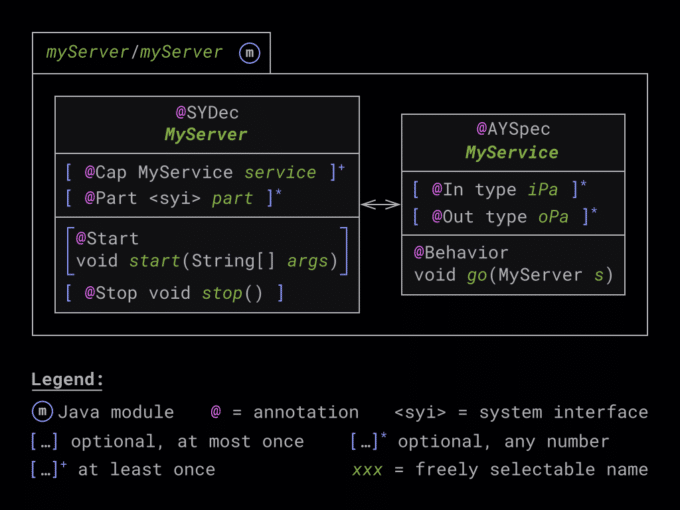
Programming the system declaration of a multithreaded server
| Annotation | Description |
|---|---|
| @SYDec | It annotates the class of a multithreaded server's system declaration. @SYDec requires a String parameter that fjp uses to generate system documentation. Example:@SYDec("My new server") class MyServer{…} |
| @Cap | It annotates a member variable that declares a capability, which is a service that the server provides. Example:@Cap MyService service; |
| @Part | It annotates a member variable that declares another server that the implemented server accesses as a client. @Part requires an ip address and a port as parameters. The type of the variable must be a system interface generated by fjp. Example:@Part("10.0.0.8", 8888) accessedServer.S part; |
| @Start | It annotates a method that the server executes when it starts. The method optionally accepts the command line parameters as a String[]. Example:@Start void start(String[] args){…} |
| @Stop | It annotates a method that the server executes when it stops. Example:@Stop void stop(){…}. |
Programming activity specifications of services that a multithreaded server provides
| Annotation | Description |
|---|---|
| @AYSpec | It annotates the class of an activity specification which implements a service of the server. @AYSpec requires a String parameter that fjp uses to generate system documentation. Example:@AYSpec("My new service") MyService{…} |
| @In | It annotates a member variable that is an input parameter of the service. @In requires a String parameter that fjp uses to generate system documentation. Byte, short, char, int, long, float, double, String, and byte[] are currently allowed as the type of parameter. Example:@In("My input parameter") int iPa; |
| @Out | It annotates a member variable that is an output parameter of the service. @Out requires a String parameter that fjp uses to generate system documentation. Byte, short, char, int, long, float, double, String, and byte[] are currently allowed as the type of parameter. Example:@Out("My output parameter") int oPa; |
| @Behavior | It annotates a method, that implements the desired behavior of the service. The method optionally accepts the system declaration as a parameter. This allows the manipulation of the server. Example:@Behavior void go(MyServer s){…} |
Exemplary implementation of a multithreaded server in Java using FEPCOS-J
This section describes how to use FEPCOS-J to implement the following simple example: A server called idServer
- concurrently handles requests from multiple clients, providing a service that returns integer IDs.
- accepts the server socket address as a command-line parameter.
- accepts an initial ID as a command-line parameter.
- returns the next ID when shut down.
Programming
The developer programs idServer's system specification within the idServer directory.
As can be seen below, the source code is in the src subdirectory. It contains the module information module-info.java, the system declaration IdServer.java, and the activity specification IdService.java.
idServer/
└── src
├── idSever
│ ├── IdServer.java
│ └── IdService.java
└── module-info.java
3 directories, 3 files
Module descriptor module-info.java
The module descriptor describes the idServer module. As can be seen below, it requires the fepcos.j.annotation module for compile time.
module idServer {
requires static fepcos.j.annotation;
}
System declaration IdServer.java
The IdServer class is the server's system declaration. As can be seen below, it is implemented in the idServer package.
package idServer;
import fepcos.j.annotation.*;
import java.util.concurrent.atomic.AtomicInteger;
@SYDec("A simple ID-Server.")
class IdServer {
@Cap IdService getId;
final AtomicInteger counter = new AtomicInteger();
@Start
void start(String[] args) {
String init = args[1]; // initial ID returned
counter.set(Integer.parseInt(init));
System.out.println("--- init ID: " + counter.get());
}
@Stop
void stop() {
System.out.println("--- next ID: " + counter.get());
}
}
The class imports fepcos.j.annotation.*. In particular, this package contains @SYDec, @Cap, @Start, and @Stop.
@SYDec indicates that the IdServer class is the system declaration of the server.
@Cap declares the service IdService getId whose class's source code is described later.
Further, the IdServer class imports java.util.concurrent.atomic.AtomicInteger [14]. It is required to realize the server's application logic. Since the final AtomicInteger counter member variable is thread-safe, it is used to concurrently generate integer IDs.
@Start indicates that the server executes the void start(String[] args) method when it starts. The method initializes counter by parsing the command line parameters args.
@Stop indicates that the server executes the void stop() method when it stops. The method prints the next ID the server would have returned.
Activity Specification IdService.java
The IdService class is the activity specification of the service. It is also implemented in the idServer package.
package idServer;
import fepcos.j.annotation.*;
@AYSpec("Returns an ID.")
class IdService {
@Out("An ID") int id;
@Behavior
void go(IdServer srv) {
id=srv.counter.getAndIncrement();
}
}
The class imports fepcos.j.annotation.*. In particular, this package contains @AYSpec, @Out, and @Behavior.
@AYSpec indicates that the IdService class is the activity specification of the service.
@Out declares the output parameter of the service int id.
@Behavior indicates that the server executes the void go(IdServer srv) method to realize the service. The line
id=srv.counter.getAndIncrement();
sets the id output parameter and increments srv.counter.
Processing, and executing
In order to process the source code, the developer runs fjp in the project directory (Fig. 3).
As a result, the tgt directory contains the system export module idServer.exp.jar, the system import module idServer.imp.jar, and its documentation, idServer.imp-doc.zip.
After that, the developer can start the server by using the command:
fjx tgt idServer.exp 10.0.0.8:8888 0
To explain:
- tgt is the directory containing the system export module.
- idServer.exp is the name of the export module.
- 10.0.0.8:8888 is the address of the server socket that accepts the client requests.
- 0 is the initial ID that the server returns.

Requesting the service by a Client
The fjp-generated system import module idServer.imp.jar enables a client to request the service from the server.
To explain, idServer.imp.jar contains the idServer.imp.S system interface. A client instantiates it and specifies the IP address and port of the server socket, here 10.0.0.8 and 8888:
var srv = new idServer.imp.S("10.0.0.8", 8888);
Then, the client can request an ID either blockingly with srv.b.getId() or concurrently with srv.c.getId().
As a result, srv.b.getId() returns a Record class [15] with an id component; srv.c.getId() returns a Future object [16] of the Record class.
Below is the complete source code of a client that blockingly accesses the server.
It is important to realize that idServer.imp.S implements the AutoCloseable interface. Thus, it is declared in a try-with-resources statement [17].
idClient/
└── src
├── idClient
│ └── App.java
└── module-info.java
3 directories, 2 files
module idClient {
requires idServer.imp;
}
package idClient;
public class App {
public static void main(String[] args) {
try(var srv = new idServer.imp.S("10.0.0.8", 8888)) {
var r1 = srv.b.getId(); // blocking access
System.out.println("id1: " + r1.id());
}
catch(Exception e) { System.out.println(e); }
}
}
Conclusion
Firstly, this post introduced the term "multithreaded TCP/IP server". It then described how FEPCOS-J supports programming a multithreaded TCP/IP server in Java. Further, the post explained what implementing the server with FEPCOS-J looks like.
Finally, this post provided an example of how to use FEPCOS-J. In particular, it described the entire source code required to program a simple multithreaded server in Java.
To emphasize, the source code does not contain any threads, virtual threads, sockets, or server sockets.
In other words, the prototype Java development tool FEPCOS-J allows the realization of a multithreaded TCP/IP server in Java without thread or network programming.
To sum up, programming a multithreaded TCP/IP server in Java is easy with FEPCOS-J.
I need your help to make FEPCOS-J a Free/Libre and Open-Source Software (FLOSS)
Have you thought about how FEPCOS-J can support your work?
FEPCOS-J shall become a Free/Libre and Open Source Software (FLOSS).
So far, FEPCOS-J is a prototype that I have independently developed. Now, I need your support, especially regarding legal issues, the testing environment, and funding.
Please let me know what you think about it and provide me with any feedback. Detailed contact information is available on my web page [18].
Thanks for reading!
References
- FEPCOS-Project: "FEPCOS-J – FEPCOS-J implements a Java language extension that enables developers to declaratively compose networked systems like building blocks"; http://fepcos.info/en/fepcos-j.html.
- Fuchs, G.: "FEPCOS-J (1) – Description, Impressions of Usage, Current State"; https://foojay.io/today/fuchs-2023-fepcos-j-01/.
- Fuchs, G.: "FEPCOS-J (2) – Declaratively compose networked systems in Java"; https://foojay.io/today/fuchs-2023-fepcos-j-02/.
- Fuchs, G.: "FEPCOS-J (3) – Build native executables of Java-coded networked systems"; https://foojay.io/today/fuchs-2023-fepcos-j-03-native-executables/.
- Internet Engineering Task Force (IETF): "RFC 9293 - Transmission Control Protocol (TCP)"; https://datatracker.ietf.org/doc/html/rfc9293.
- Internet Engineering Task Force (IETF): "RFC 9113 - HTTP/2"; https://datatracker.ietf.org/doc/html/rfc9113.
- Network Working Group: "RFC 959 - FILE TRANSFER PROTOCOL (FTP)"; https://datatracker.ietf.org/doc/html/rfc959.
- Network Working Group: "RFC 5321 - Simple Mail Transfer Protocol"; https://datatracker.ietf.org/doc/html/rfc5321.
- Oracle and/or its affiliates: "Networking Basics"; https://docs.oracle.com/javase/tutorial/networking/overview/networking.html.
- Oracle and/or its affiliates: "Class ServerSocket"; https://docs.oracle.com/en/java/javase/21/docs/api/java.base/java/net/ServerSocket.html.
- Oracle and/or its affiliates: "Class Thread"; https://docs.oracle.com/en/java/javase/21/docs/api/java.base/java/lang/Thread.html.
- Pressler, R. and Bateman, A.: "JEP 444: Virtual Threads"; https://openjdk.org/jeps/444
- Oracle and/or its affiliates: "Virtual Threads"; https://docs.oracle.com/en/java/javase/21/core/virtual-threads.html.
- Oracle and/or its affiliates: "Class AtomicInteger"; https://docs.oracle.com/en/java/javase/21/docs/api/java.base/java/util/concurrent/atomic/AtomicInteger.html.
- Oracle and/or its affiliates: "7 Record Classes"; https://docs.oracle.com/en/java/javase/21/language/records.html.
- Oracle and/or its affiliates: "Interface Future<V>"; https://docs.oracle.com/en/java/javase/21/docs/api/java.base/java/util/concurrent/Future.html.
- Oracle and/or its affiliates: "The try-with-resources Statement"; https://docs.oracle.com/javase/tutorial/essential/exceptions/tryResourceClose.html
- FEPCOS-Project: "Gerhard Fuchs – The computer scientist who founded the FEPCOS-Project to simplify the programming of composed networked systems."; http://fepcos.info/en/fuchs.html.
All references were last accessed on March 15, 2023.
Don’t Forget to Share This Post!





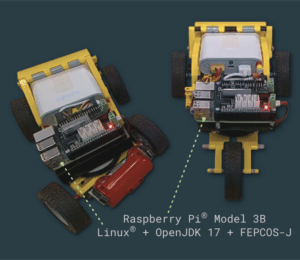
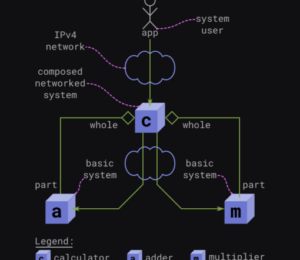
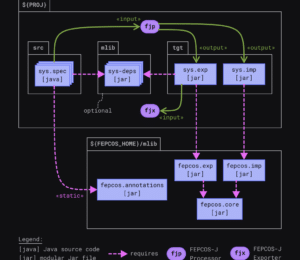



Comments (0)
No comments yet. Be the first.